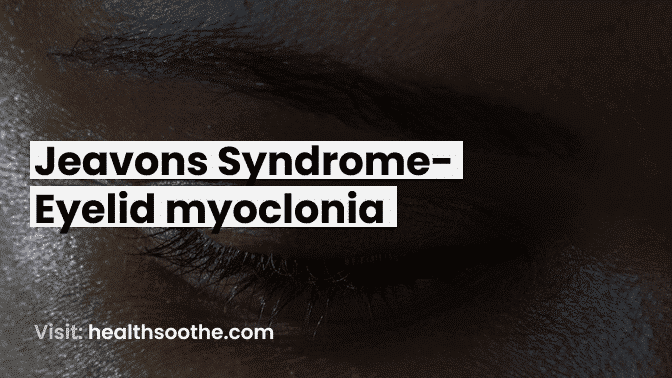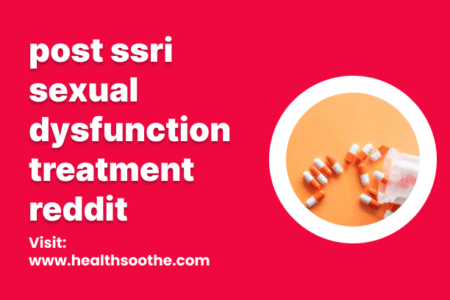Eyelid myoclonia with or without absence seizures, eyelid closure-elicited electroencephalographic (EEG) paroxysms (epileptiform discharges and/or seizures), and photosensitivity are the three hallmarks of the idiopathic generalised epilepsy known as Jeavons syndrome.
Up to 13% of generalised epilepsies may be caused by this disease. On the other hand, it is commonly ignored and underreported. The majority of individuals have medically intractable epilepsy, and seizures often last a lifetime.
Clinical Features and Response to Treatment On Jeavons syndrome
Background: Jeavons syndrome is a rare form of epilepsy that is characterised by photosensitivity, seizures brought on by closing the eyelids, and eyelid myoclonia.
Treatment-resistant epilepsy is a frequent occurrence, although the clinical causes and prognostic variables that contribute to drug resistance have not been well studied.
Methods: Between January 1, 2000, and December 15, 2016, we identified 30 patients at a single institution who fit the Jeavons syndrome diagnostic criteria. Jeavons syndrome criteria included each of the following:
(1) absences or absence-like myoclonia of the eyelids
(2) Paroxysms on electroencephalography or seizures brought on by closing the eyes
(3) seizure onset after the age of 12 months. We went through the history of epilepsy, antiepileptic medication trials, and treatment response.
Results: 80% of patients were female, and the mean age at seizure start was 7.3 years. The most frequent types of first seizures were absence seizures (63%) and generalised tonic-clonic seizures (23%).
An average of 9.6 years passed before a diagnosis was made. 80% of patients had drug-resistant epilepsy and 70% had generalised tonic-clonic seizures after a median follow-up of two years.
The probability of developing drug-resistant epilepsy was raised by generalised tonic-clonic seizures and seizure types other than absence seizures (P values 0.049 and 0.03, respectively). In order to reduce seizures by more than 50%, valproic acid, lamotrigine, ethosuximide, and levetiracetam were the most successful.
Jeavons syndrome diagnosis is often postponed. In individuals with Jeavons syndrome, generalised tonic-clonic seizures and seizure types other than absence seizures may be indicators of drug-resistant epilepsy.
What causes Jeavons syndrome
Epilepsy cannot be spread. Though various underlying diseases may cause epilepsy, in roughly 50% of cases throughout the world the disease’s origin is still unknown.
The following subcategories of causes of epilepsy exist: structural, genetic, infectious, metabolic, immunological, and unknown. Examples comprise:
- brain damage from prenatal or perinatal causes (e.g. a loss of oxygen or trauma during birth, low birth weight);
- congenital abnormalities or genetic conditions with associated brain malformations;
- a severe head injury;
- a stroke that restricts the amount of oxygen to the brain;
- an infection of the brain such as meningitis, encephalitis or neurocysticercosis,
- certain genetic syndromes; and
- a brain tumour.
Signs and symptoms of Jeavons syndrome
Seizures may have a variety of characteristics, depending on where in the brain the disruption initially appears and how far it develops. Temporary symptoms include loss of awareness or consciousness as well as impairments in movement, mood, or other cognitive processes, as well as changes of sense (including vision, hearing, and taste).
Both physical issues (such as fractures and bruises from seizure-related traumas) and psychological issues, such as anxiety and sadness, are more common in people with epilepsy.
Similar to this, patients with epilepsy have a risk of dying prematurely that is up to three times greater than that of the general population, with rural regions and low- and middle-income nations having the greatest rates of early mortality.
Many of the epilepsy-related causes of mortality, particularly in low- and middle-income nations, may be avoided, including falls, drowning, burns, and extended seizures.
Management and treatment
seizures are manageable. With the proper administration of antiseizure medications, up to 70% of patients with epilepsy might become seizure-free.
When considering stopping the anti-seizure medication, pertinent clinical, social, and personal variables should be taken into consideration after two years without seizures.
The two most reliable indicators of seizure recurrence are a known aetiology for the seizure and an abnormal electroencephalography (EEG) pattern.
- About 75 per cent of epileptic patients may not obtain the necessary care in low-income nations. The “treatment gap” refers to this.
- Anti-seizure drugs are not widely available in many low- and middle-income nations.
- According to recent research, fewer than 50% of generic antiseizure medications are typically available in the public sector of low- and middle-income nations. This can make it difficult to get treatment.
- Most epileptic patients may be diagnosed and treated at the basic healthcare level without the need for advanced technology.
- According to WHO pilot studies, teaching primary healthcare practitioners how to recognise and treat epilepsy may significantly close the treatment gap for the condition.
- Patients who react poorly to pharmacological therapies may benefit from surgery.
Preventing Jeavons syndrome
Around 25% of epilepsy cases may be avoided.
- The best strategy to avoid post-traumatic epilepsy is to prevent head injuries.
- Proper prenatal care may lower the number of new instances of epilepsy brought on by birth trauma.
- The risk of febrile seizures may be decreased by using medications and other techniques to lower a sick child’s body temperature.
- The reduction of cardiovascular risk factors, such as actions to prevent or manage high blood pressure, diabetes, and obesity, as well as abstaining from cigarettes and excessive alcohol consumption, is the main goal of the prevention of epilepsy linked with stroke.
- Epilepsy is often brought on by central nervous system illnesses in tropical regions, which are mostly inhabited by low- and middle-income nations. The prevalence of epilepsy, such as that brought on by neurocysticercosis, may be decreased globally by the elimination of parasites in these settings and education on how to prevent infections.
Conclusion:
Each year, epilepsy affects an estimated 5 million individuals worldwide. Epilepsy is thought to be diagnosed in 49 out of every 100,000 persons annually in high-income nations. This number may reach 139 per 100 000 in low- and middle-income nations.
This is probably because endemic diseases like malaria and neurocysticercosis are more common, road traffic accidents and birth injuries are more common, and there are differences in the medical infrastructure, the availability of preventative health programmes, and access to treatment. Nearly 80% of epilepsy sufferers reside in low- and middle-income nations.





